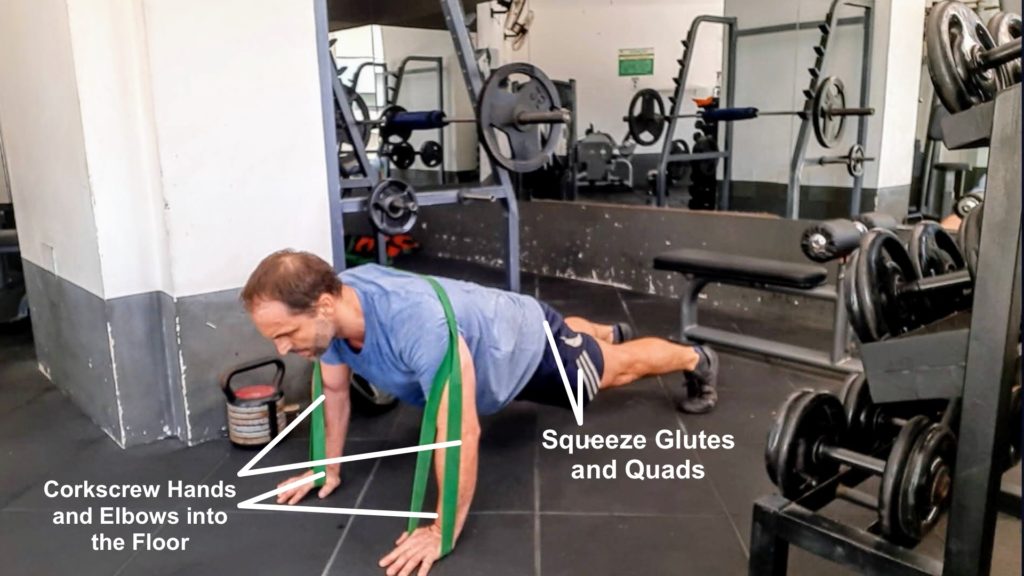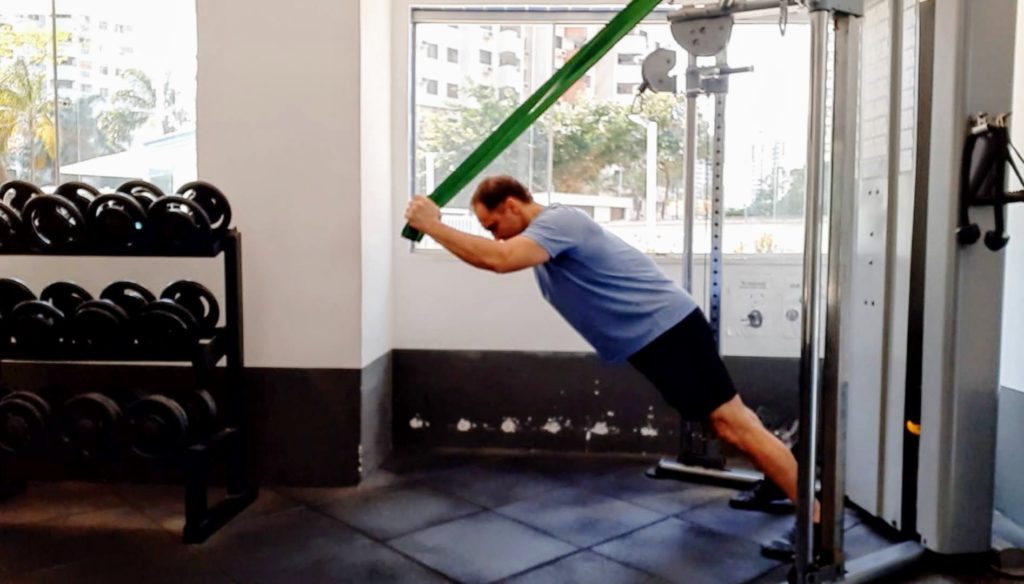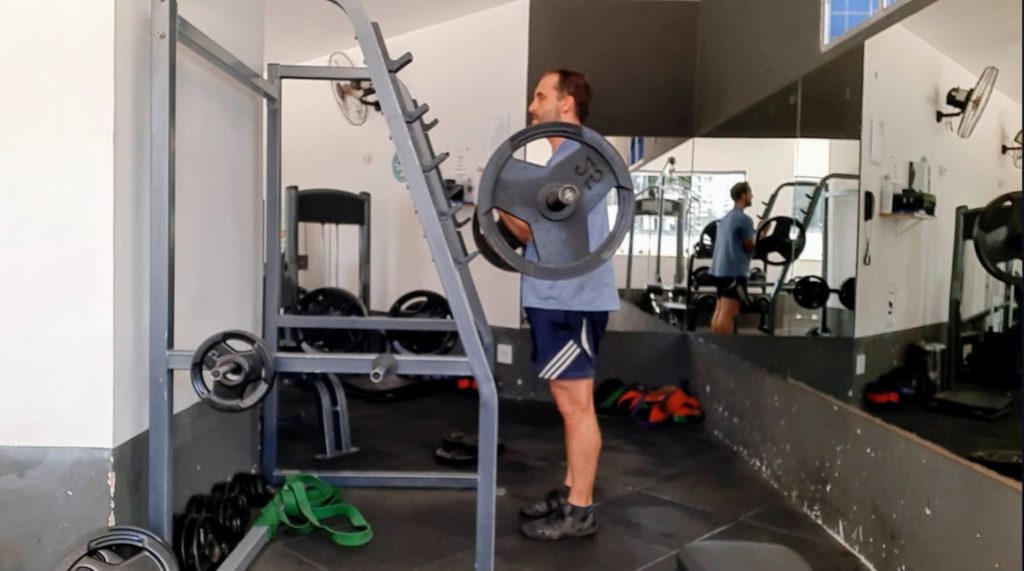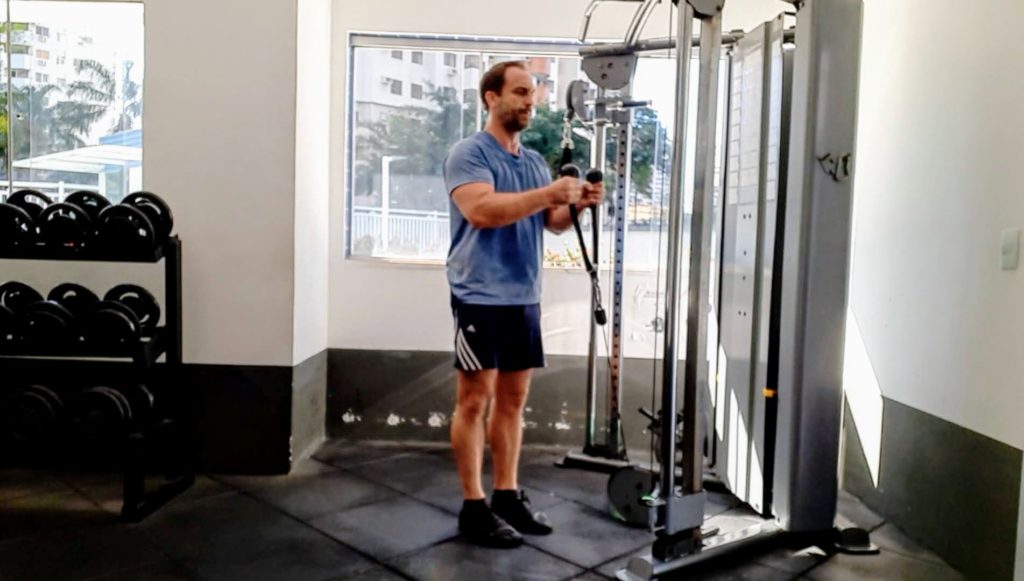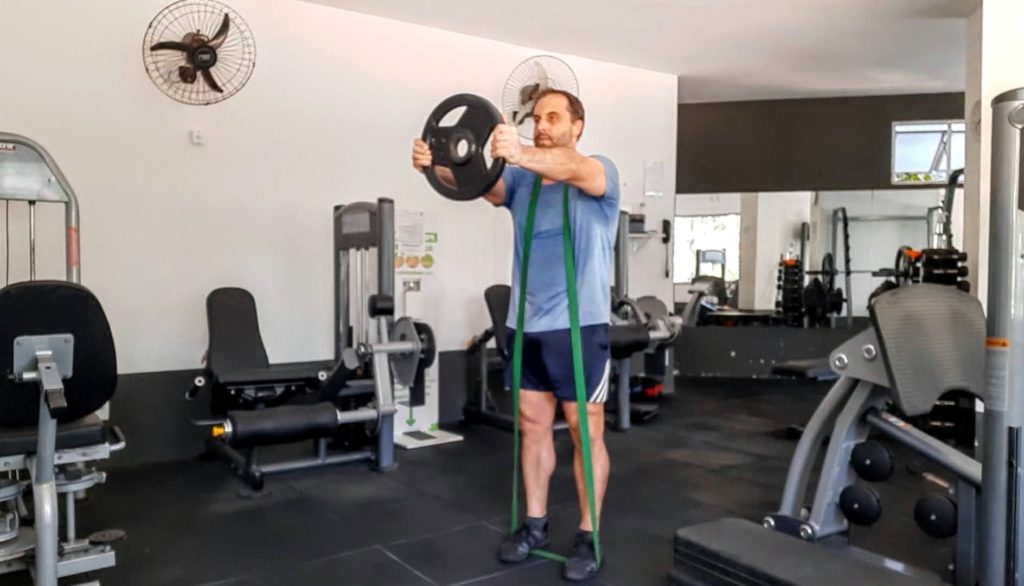Stand Your Planks For Greater Strength
The plank is a good exercise when done correctly. Unfortunately, you often see it poorly performed. Either poor form occurs in the beginning or during the exercise as fatigue begins to set in. You must do the plank right to produce strength effectively.
When doing a plank, you need to stay tight. Firstly, you must squeeze your butt. When you squeeze your butt, it changes the whole dynamic of the plank. When you squeeze your glutes, the tension reciprocates and transfers to your abdominals to stabilize and contract. The glutes are the center of gravity. And that point of the center of gravity also aligns and balances your spine’s position. However, the glute strength acts as a catalyst to reciprocate tension through the whole body.
For example, when you squeeze your glutes, it activates your abdominals. Activating your abdominals activates your back and mid-back muscles. That is your core. Your core is the center of gravity, not just your abs.
And in your lower body, contracting your quads activates more tension in your hips, glutes, knees, and ankles.
And finally, you activate your lats and back muscles by isometrically corkscrewing your hands and elbows into the floor.
Once you have everything contracted and tight, hold it. Now, that is a plank!
Making Your Plank More Challenging
You don’t need to hold your plank for more than a minute. But, if you are, it is too
easy, and you need to challenge your plank. You can do this by adding resistance bands. It is easier than trying to stack plates on your back and hips. Or you can elevate your plank by extending your arms out in front or putting your feet on a bench.
However, doing planks without the floor using resistance bands, barbells, a cable machine, or a plate will develop more core strength than any plank being done on the floor. It is all about tension and leverage. Furthermore, standing and incline planks are more transferable for strength exercises and sport-specific movements.
The evolution of the plank is complex unless you can lift your body off the floor onto your hands. So, let’s step it back a bit. Now that you know how the plank works, these exercises will be more effective.
Resistance Band Standing Planks
Using heavy-duty resistance bands, hook them up around a pullup bar. And put
yourself into an incline pushup position. Find the incline that challenges you the most and hold it. Don’t forget to squeeze your glutes and quads.
Standing Plank Using a Barbell
Load the barbell on the rack and put the neck pad in the middle. Lift the barbell from your elbows. Once the weight is lifted, squeeze your quads and glutes, and lean slightly forward into your big toe. Don’t overload. Find out what works best before you go heavy.
Standing Plank Using a Cable Machine
You can use the cable machine if the barbell hurts your arms or is too complicated—
the same idea applies. Use the ropes for the cable machine. Set the lever at the bottom. The difference between the barbell and the cable machine is the cable machine will pull you down and forward more. So, squeeze your quads and glutes and lean into the big toe.
If you don’t have a cable machine, use a resistance band. Secure one end of the band around a sturdy anchor point and lift and hold the band up at your chest. Then, apply the plank techniques and cues in the standing position.
Standing Plank Using a Plate and Resistance Band
Put the resistance band around your neck and under your feet. Hold a plate in front
of your chest. Use all the plank cues in the standing position to hold your plank correctly.
Remember, training the plank is about developing your core, not just your abdominals. When you develop your core, it transfers strength through your whole body. Your core is your power, your center, comprised of your abs, glutes, lower back, and obliques.
So, make sure you focus on the cues when doing planks and these standing plank exercises to have a powerful core.
RECOMMENDED FOR YOU
MOST POPULAR
Stand Your Planks For Greater Strength
The plank is a good exercise when done correctly. Unfortunately, you often see it poorly performed. Either poor form occurs in the beginning or during the exercise as fatigue begins to set in. You must do the plank right to produce strength effectively.
When doing a plank, you need to stay tight. Firstly, you must squeeze your butt. When you squeeze your butt, it changes the whole dynamic of the plank. When you squeeze your glutes, the tension reciprocates and transfers to your abdominals to stabilize and contract. The glutes are the center of gravity. And that point of the center of gravity also aligns and balances your spine’s position. However, the glute strength acts as a catalyst to reciprocate tension through the whole body.
For example, when you squeeze your glutes, it activates your abdominals. Activating your abdominals activates your back and mid-back muscles. That is your core. Your core is the center of gravity, not just your abs.
And in your lower body, contracting your quads activates more tension in your hips, glutes, knees, and ankles.
And finally, you activate your lats and back muscles by isometrically corkscrewing your hands and elbows into the floor.
Once you have everything contracted and tight, hold it. Now, that is a plank!
Making Your Plank More Challenging
You don’t need to hold your plank for more than a minute. But, if you are, it is too
easy, and you need to challenge your plank. You can do this by adding resistance bands. It is easier than trying to stack plates on your back and hips. Or you can elevate your plank by extending your arms out in front or putting your feet on a bench.
However, doing planks without the floor using resistance bands, barbells, a cable machine, or a plate will develop more core strength than any plank being done on the floor. It is all about tension and leverage. Furthermore, standing and incline planks are more transferable for strength exercises and sport-specific movements.
The evolution of the plank is complex unless you can lift your body off the floor onto your hands. So, let’s step it back a bit. Now that you know how the plank works, these exercises will be more effective.
Resistance Band Standing Planks
Using heavy-duty resistance bands, hook them up around a pullup bar. And put
yourself into an incline pushup position. Find the incline that challenges you the most and hold it. Don’t forget to squeeze your glutes and quads.
Standing Plank Using a Barbell
Load the barbell on the rack and put the neck pad in the middle. Lift the barbell from your elbows. Once the weight is lifted, squeeze your quads and glutes, and lean slightly forward into your big toe. Don’t overload. Find out what works best before you go heavy.
Standing Plank Using a Cable Machine
You can use the cable machine if the barbell hurts your arms or is too complicated—
the same idea applies. Use the ropes for the cable machine. Set the lever at the bottom. The difference between the barbell and the cable machine is the cable machine will pull you down and forward more. So, squeeze your quads and glutes and lean into the big toe.
If you don’t have a cable machine, use a resistance band. Secure one end of the band around a sturdy anchor point and lift and hold the band up at your chest. Then, apply the plank techniques and cues in the standing position.
Standing Plank Using a Plate and Resistance Band
Put the resistance band around your neck and under your feet. Hold a plate in front
of your chest. Use all the plank cues in the standing position to hold your plank correctly.
Remember, training the plank is about developing your core, not just your abdominals. When you develop your core, it transfers strength through your whole body. Your core is your power, your center, comprised of your abs, glutes, lower back, and obliques.
So, make sure you focus on the cues when doing planks and these standing plank exercises to have a powerful core.

